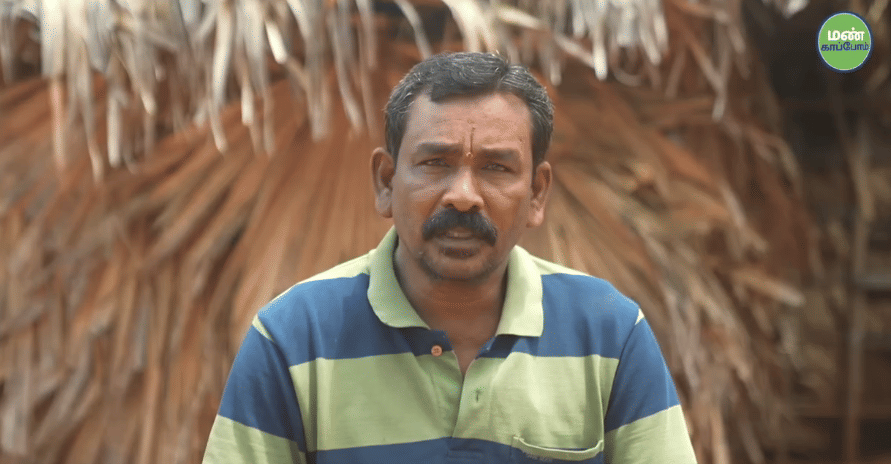>
Save Soil Regenerative Revolution>
Blogs>
Human Impact Stories>
Palmyra Tree – A Kalpavriksha for Farmers in Tamil Nadu
Share
Palmyra Tree – A Kalpavriksha for Farmers in Tamil Nadu
Human Impact Stories
14 Aug 2025
11:45 am
Reviving the palmyra tree tradition, Nagalingam earns up to ₹8 lakhs annually through palm jaggery while promoting climate-resilient farming.

In the sun-drenched landscapes of Ramanathapuram district, where dryland farming is both a challenge and a tradition, one farmer is quietly reviving an age-old treasure — the palmyra tree, also known as the Kalpavriksha or "wish-fulfilling tree."
Meet Mr. Nagalingam, a natural farmer from Sattiram village near Kadukachandai. While many farmers depend solely on seasonal crops, Mr. Nagalingam has diversified his livelihood in a way that’s deeply rooted in local culture and climate resilience.
A Tree That Gives Without Asking Much
The palmyra tree is no ordinary tree. Native to Tamil Nadu, it thrives in dry climates, requires minimal care, and offers a bounty of ecological benefits:
- Recharges groundwater
- Improves soil fertility
- Provides year-round economic potential
For Mr. Nagalingam, these trees are not just part of the landscape — they are an integral part of his farm’s sustainability.
The Sweet Success of Palm Jaggery
From the Tamil months of Thai to Aadi, Mr. Nagalingam cultivates vine vegetables using natural methods. But what brings him his most remarkable income is the age-old craft of tapping padaneer (palm nectar) from palmyra trees and turning it into panang karuppatti (palm jaggery).
This traditional sweetener — packed with minerals and rich in cultural value — earns him an annual profit of ₹6 to ₹8 lakhs.
“Palm jaggery is not just a product; it’s a legacy,” he says.
A Tradition at Risk
Despite its potential, the art of palm jaggery production is fading. The reason? A shrinking pool of skilled labor and waning awareness among younger generations.
But Mr. Nagalingam is not giving up. He sees a future where palm jaggery isn’t just a rural relic but a thriving, health-conscious business. With increasing demand for natural sweeteners and sustainable farming models, his conviction is clear: the future is sweet — and made of karuppatti.
Why the Palmyra Tree Matters Today
At a time when Indian agriculture faces soil degradation, water scarcity, and unpredictable weather, the palmyra tree offers a time-tested solution. Its deep roots and low maintenance make it an ideal crop for climate-resilient agriculture, especially in arid and semi-arid regions.
More importantly, it holds the promise of economic independence for farmers who are willing to think beyond conventional crops.
A Call to Revive the Kalpavriksha
Mr. Nagalingam’s story is more than an inspiring tale — it’s a blueprint for the future. If supported through training, awareness, and market access, farmers across South India can turn to the palmyra tree not just for shade, but for a sustainable source of livelihood.
As the world searches for climate-smart agriculture and healthier food alternatives, perhaps it’s time we looked back — to a tree that has always quietly given us everything we need.
https://www.facebook.com/swami.srimukha/videos/4049117995317747/?rdid=t9VuBaXP9qrP9neO#
Keep In Touch
Get the latest updates on blog and happenings at Save Soil Regenerative Revolution and on the rest of Isha's social work — delivered to your inbox.
